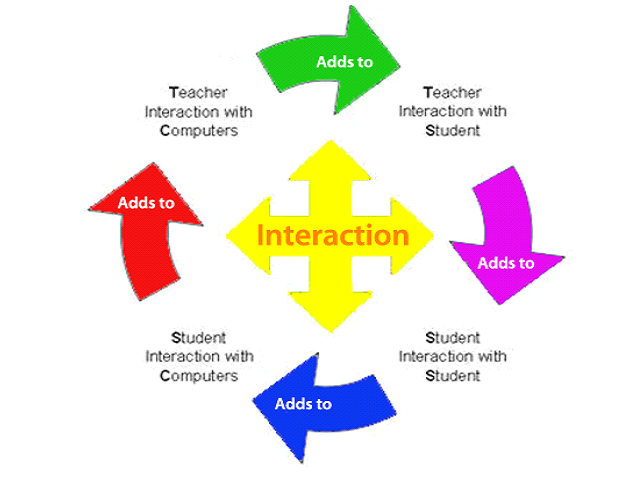Retention and Faculty/Student Interaction in College

Students interacting with heir faculties – instructors – teachers – professors and vice versa for their coursework or syllabus in or apart from their regular teaching timing through interface or online mode - is termed to be student faculty interaction.
It has been derived basis the research of years that more the student faculty interaction – better results is what you can expect. The learning effectiveness and persistence towards achievement of educational goals is enhanced. Interactions with the faculty or experts increase the attention of the student towards the college and also at the same time they get the benefit to see firsthand identification followed by solutions to issues and tasks; performed by their instructors. These instructors - faculties become role models or mentors for the students who are the next generation of intellectuals leading the way for the world.
Some interesting findings about student-faculty interactions and different types of student faculty interactions with approximate figures for the last few years:
- 61% students very often use e-mail for interactions with their faculties
- 50% students discuss their grades and assignments with their faculties
- 28% students discuss their career plans with their faculties
- 55% students discuss their learning and ideas with their faculties
- 92% students claim to have received prompt/ in time answer or revert to their queries

SchoolandUniversity.com shares some useful tips useful to enhance the experience of Student Faculty interaction answering some of the universal questions including:
- How to overcome professional distance between faculty and students?
- How to encourage student-student interaction?
- What factors leave positive impact on student affairs?
- Why and how to talk with your professors?
- What are the benefits of faculty engagement?
- Why we should promote learning communities?
- Changing the way faculty and students interact using social media – Does it help?
- How about funds for the faculty entertainment of students?
It is a three step strategy which might prove to be really helpful.
Be distinct to get observed
One of the best ways to help your own self; is getting noticed in a positive manner by your faculty - by creating your impression as a student who is really
- Active
- Interested
- Motivated
- Responsible
There is a belief that “Good” students in high schools are those; who do not indulge in BAD behaviors. However, simply not being bad will not make you GOOD. Good students are those who understand “what is expected” and adhere to “what is expected”. They believe in P.A.C.T:
- P – Punctual
- A – Accurate
- C – Courteous
- T – Truthful
Going further with the fundamentals of a GOOD Student and Not so GOOD Student; enlisted are some of the rules to be followed to get yourself termed accordingly and being observed by your faculties.
Good Student
- Active attitude
- Be prepared
- Be punctual
- Be regular in your class
- Frequently ask questions – raise doubts
- Meet your faculty frequently – but don’t do it too often
- Put across in your results and understanding; your faculty’s expertise and services spent for you
Not so Good Student
- Do not follow P.A.C.T
- Do side conversation while your faculty is instructing
- Do not follow mobile etiquettes
- Do not adhere to class rooms
- Do act as if your are bored with the faculty’s lecture
- Start winding off even before the class gets over
Performance Counts
We all know that END results Count…May it be in real life or the academics.
Considerable scores in tests, communicating in a clear and articulating manner and writing tasks which look professional and up to the mark; are some of the leading performance parameters.
For achieving such an performance one needs to be
Savvy: Never be a headless chicken. Know what your faculty is teaching and then actually DO what he expects you to do. Seeking help from them is never denied
Work hard: Never give a impression that you are a lazy bone. Meeting up minimum required criteria will not lead you to the desired success. Ensure to work hard for anything and everything and more than your class fellows
Active role: Students who sit back and expect the knowledge and skills to flow down to them…it is never going to happen for them. It is a learning process and you need to take the initiative actively to proceed and progress
On hand experience
For a pre hand experience or feeling where does it pinch – one needs to get involved with the faculties. These opportunities can be acquired while working with learning communities and student engagement initiatives as:
- Teaching assistant
- Research assistant
- Mentor
- Tutor
- Peer advisor Club or organization officer
- Work-study student
- Academic advisors
- Club or organization advisors
One can also go ahead to find out approachable faculty members from:
- Learning community faculty members
- Student/faculty interaction grants program
- Undergraduate advising information and resources
- Faculty-in-residence program
- Members of academic support services including;
- Career Center
- Learning Center
- Senior students
- Writing Center
